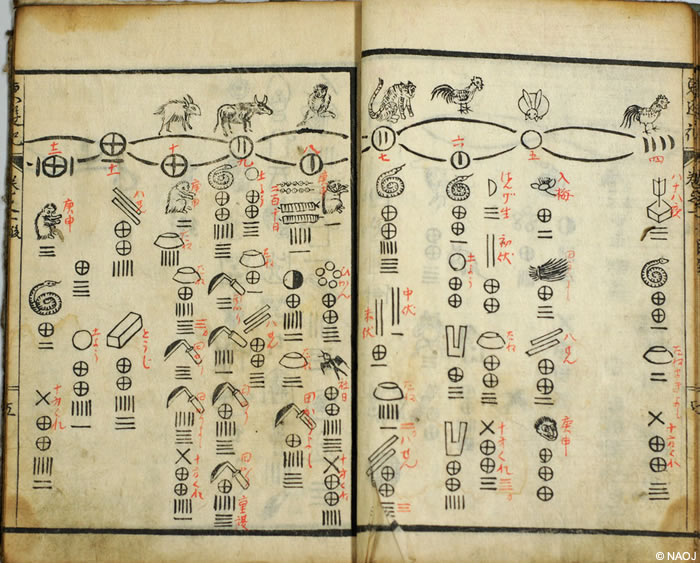“Tayama Calendar” ( “The final Volume of the Eastern Travel Log” Collection)
Historical illustration・

| Year Produced | 1797 (Kansei Era 9) |
|---|---|
| Author | Nankei Tachibana |
| Credit | Collection of the National Astronomical Observatory of Japan |
Historical illustration・

| Year Produced | 1797 (Kansei Era 9) |
|---|---|
| Author | Nankei Tachibana |
| Credit | Collection of the National Astronomical Observatory of Japan |
This is a pictorial calendar made in Tayama, in the Kazuno district of the Nanbu region. Together, it and the Morioka Calendar are known as the Nanbu Calendars. It is said to have been made by Zenpachi who came to Tayama around the time of the Genroku Era (1688-1704 AD) or the Shotoku Era (1711-1715 AD). Few have survived to this day, the oldest being from 1783 (Tenmei Era 3). The Tayama Calendar is recorded in Nankei Tachibana’s “The final Volume of the Eastern Travel Log ” in the possession of the NAOJ. According to this travel log, the Tayama Calendar was unusual in those days. “In the remote parts of Nanbu, there seems to be a rudimentary pictorial calendar” indicating that there was a calendar made to be understood by illiterate people. The Tayama Calendar was made to help peasant farmers who couldn’t read.
To read the pictures of the “Tayama Calendar”, you should start by looking at the signs above the cord. In those days, there were long months of 30 days and short months of 29 days. The months at the knots in the cord are long and the months in between the knots are short. The numbers 1 through 4 are indicated by vertical lines; 5 is a circle; 6 and 7 are circles with vertical lines in them; 8 and 9 are circles with two vertical lines and one or two horizontal lines (in this copy Nankei mistakenly left out the horizontal lines); 10 is a circle with a cross in it; 11 is the symbol for 10 with a horizontal line added to the outside; 12 is the symbol for 10 with two vertical lines added to the outside. The animals above the sings for the months indicate the animal of the Chinese Zodiac associated with the first day of that month. If you look at the 5th month you can see a drawing of a plum blossom to indicate the season Nyubai (the beginning of the summer rains, sometimes called “plum rains”) and a bundle of seedlings to indicate the auspicious day for planting rice seedlings. In the 6th month you can see a half circle to indicate Hangesho (literally “Half Summer” the time when medical herbs can be harvested, 11 days after the Summer Solstice). Beneath these symbols, various dates are recorded.
(Translator's Note: In addition to the standard Gregorian Calendar, Japan continues to use a reign era calendar. The different eras are defined by changes in the Japanese government, and accompanied by changes in Japanese society.)